By Sandra Nelson
Nurseries, garden centers, big box stores, grocery stores, discount centers, florists, online retailers — they’re all offering vast displays of cacti to tempt their customers into impulsively picking up one or two to take home. Before giving in to temptation however, it’s wise to take a few minutes to do some homework first. Analyze the conditions available to the plants at home ( light, temperature), figure out what you want (thorns, no thorns) and how much care you want to give (repotting, propagating), then learn which commonly grown (and legally obtained) species will thrive under your care and in your environment. Just like outdoors, putting the right plant in the right place leads to success.

With so many varieties available today, it’s difficult to know which ones are best for the casual grower and which ones are better left to the experts. We’ve given you ten beginner’s choices that are exceptional varieties for growing indoors as houseplants.
BISHOP’S CAP (Astrophytum myriostigma)

- Full sun with some summer shade
- Water once a month in fall; Keep dry in winter
- 24 x 4 inches
- Fragrant yellow flowers early spring to fall
BARREL CACTUS (Ferocactus Glaucescens)

- Full sun with midsummer shade
- Water thoroughly then drain in summer; Allow to dry in between waterings: Keep almost dry in winter
- 18 x 12 inches
- Dramatic red spines surrounded by white spines
- Purplish-pink flowers at the top in summer
OLD LADY CACTUS (Mammillaria hahniana)

- Full sun with light summer shade
- Water thoroughly then drain in summer; Allow to dry in between waterings: Keep totally dry in winter: Mist occasionally
- 4 x 8 inches
- Soft, silvery-white spines
- Rose-red blooms in spring followed by inedible fruit
- Ideal choice for beginners
CHIN CACTUS (Gymnocalycium baldianum)
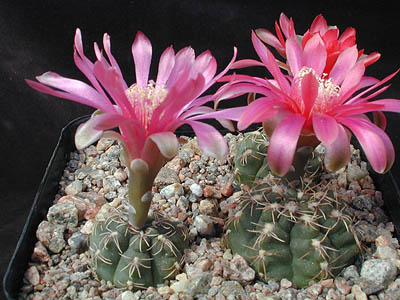
- Full sun with light summer shade
- Water thoroughly then drain in summer; Allow to dry in between waterings: Keep totally dry in winter
- 4 x 5 inches
- Purplish-red flowers at the top in summer
- Extremely easy to grow
AFRICAN MILK TREE (Euphorbia trigona)

- Technically a succulent but handled as a cactus
- Full sun with some summer shade
- Keep partially dry during winter
- 6 feet x 3 feet when full grown
- Will drop leaves in fall and resprout in spring
- Sap is a skin and eye irritant
BUNNY EARS CACTUS (Opuntia microdasys)

- Full sun all year
- Reduce water in fall; Keep dry in water
- 18 x 24 inches
- Yellow flowers in summer followed by purple to red fruit
- Take care when handling; can irritate the skin
FAIRY CASTLES CACTUS (Acanthocereus tetragonus)

- Full sun with some summer shade
- Keep dry in winter
- 36 x 12 inches
- Flowers rare when grown indoors
MISTLETOE CACTUS (Rhipsalis baccifera)

- True cactus that resembles succulent
- Light shade; No direct sunlight
- Water when top is dry but don’t waterlog; Reduce winter watering but don’t allow to completely dry out; Mist frequently
- 5 x 2 feet
- White flowers and berries at tips
- Gorgeous in a hanging basket
BLUE TORCH CACTUS (Pilocereus pachycladus)

- Full sun all year
- Reduce water in fall; Keep dry in water
- 36 x 6 inches
- Night opening white or red flowers on mature plants
- Stunning blue color
TURK’S CAP CACTUS (Melocactus matanzanus)
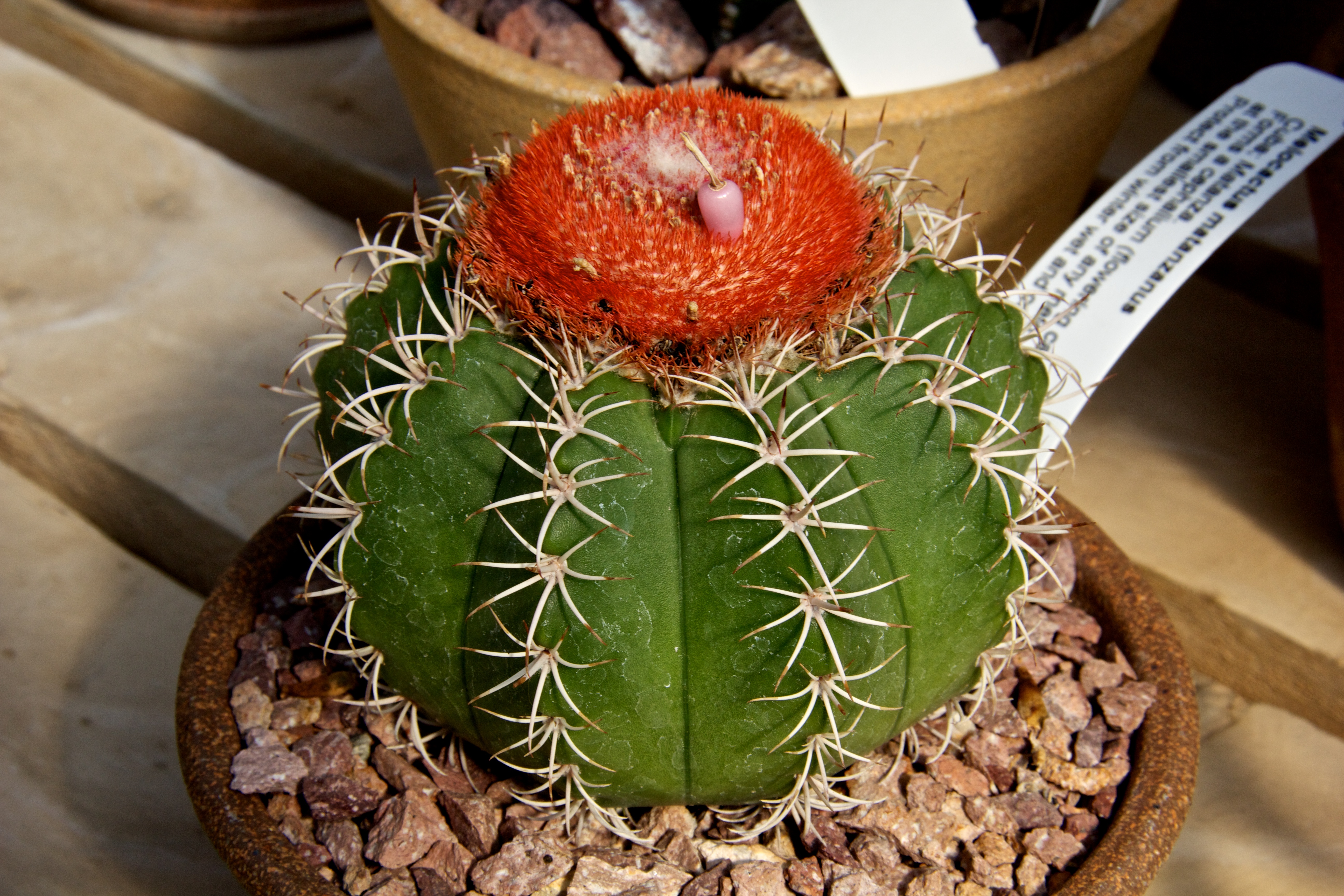
- Full sun with some summer shade
- Moist soil from late spring to late summer; Slightly moist throughout fall and winter: Do not allow to completely dry out but does not tolerate saturated soil
- 7 x 3 inches
- Flowers at four years; Purchase one in bloom to assure flowers

∗∗∗∗∗∗∗∗∗∗
With the endless options narrowed down to a reasonable number, it’s time to shop for the perfect plants. Before making your final selection, carefully examine your choices.  Are the plants healthy? Are there tell tale signs of pest damage like silky webs (spider mites) or clusters of tiny white eggs (spider mites)? Are the stems and leaves shriveled, indicating a lack of water?
Are the plants healthy? Are there tell tale signs of pest damage like silky webs (spider mites) or clusters of tiny white eggs (spider mites)? Are the stems and leaves shriveled, indicating a lack of water?  Are the stems stretching or weak as if the plant did not have adequate light? Is the plant root bound, with roots growing out of the bottom of the pot? Is there any evidence of disease, such as brown spots or soft areas?
Are the stems stretching or weak as if the plant did not have adequate light? Is the plant root bound, with roots growing out of the bottom of the pot? Is there any evidence of disease, such as brown spots or soft areas?
Once purchased, a retailer knowledgeable about cacti will make sure that your plants are carefully wrapped in bubble wrap, newspaper or cellophane and firmly settled in a bag or sturdy box before you head home. Unlike many other types of houseplants, cacti can be easily damaged in transport. Wounds on stems open delicate tissue to potential disease problems. Exposure to winter’s freezing temperatures, even for a brief time, could damage or even kill the plants. Sitting in a blazing hot car in the summer months could do the same.
in a bag or sturdy box before you head home. Unlike many other types of houseplants, cacti can be easily damaged in transport. Wounds on stems open delicate tissue to potential disease problems. Exposure to winter’s freezing temperatures, even for a brief time, could damage or even kill the plants. Sitting in a blazing hot car in the summer months could do the same.
Cacti, like other houseplants, have specific growth and dormancy seasons which are necessary for vigorous, healthy growth. In the wild, those seasons are controlled by changing levels of light and variations in average temperatures. For most (but not all) cacti, spring to early fall, with more intense sunlight and warmer temperatures are prime growing periods. 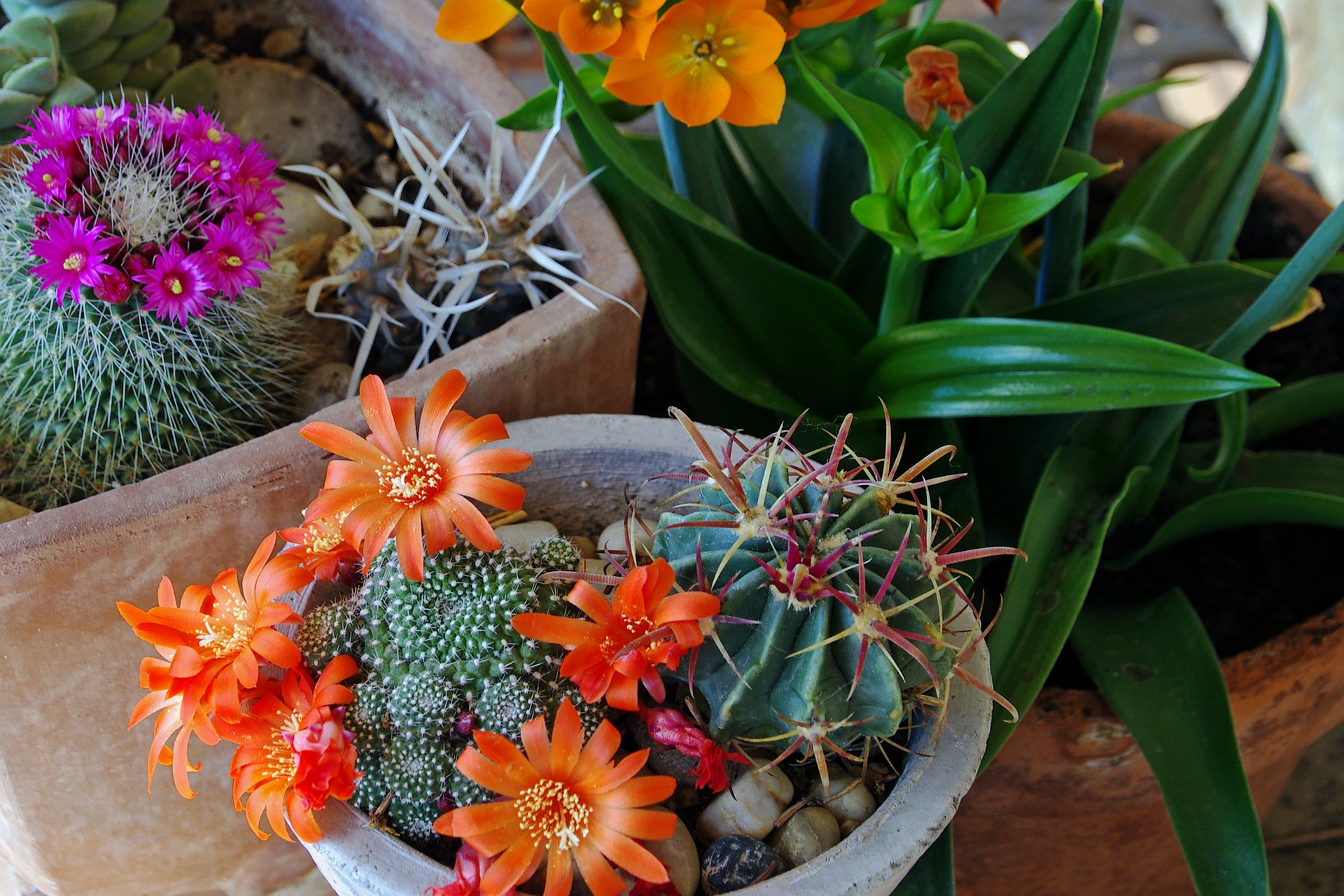 Plants put on new growth and often flower. Fall and winter have shorter days, which means less light, and lower temperatures. Growth slows, which lets plants “rest,” conserving and storing energy for the next active growing season.
Plants put on new growth and often flower. Fall and winter have shorter days, which means less light, and lower temperatures. Growth slows, which lets plants “rest,” conserving and storing energy for the next active growing season.
Indoors, since we stay comfortable by keeping both temperatures and light levels relatively stable all year long, we forget that our plants are not experiencing the changing conditions they need to remain robust and healthy. During the long summer days, most (but again, not all) cacti flourish in bright but indirect light and warm but not scorching temperatures. Placing them too close to windows during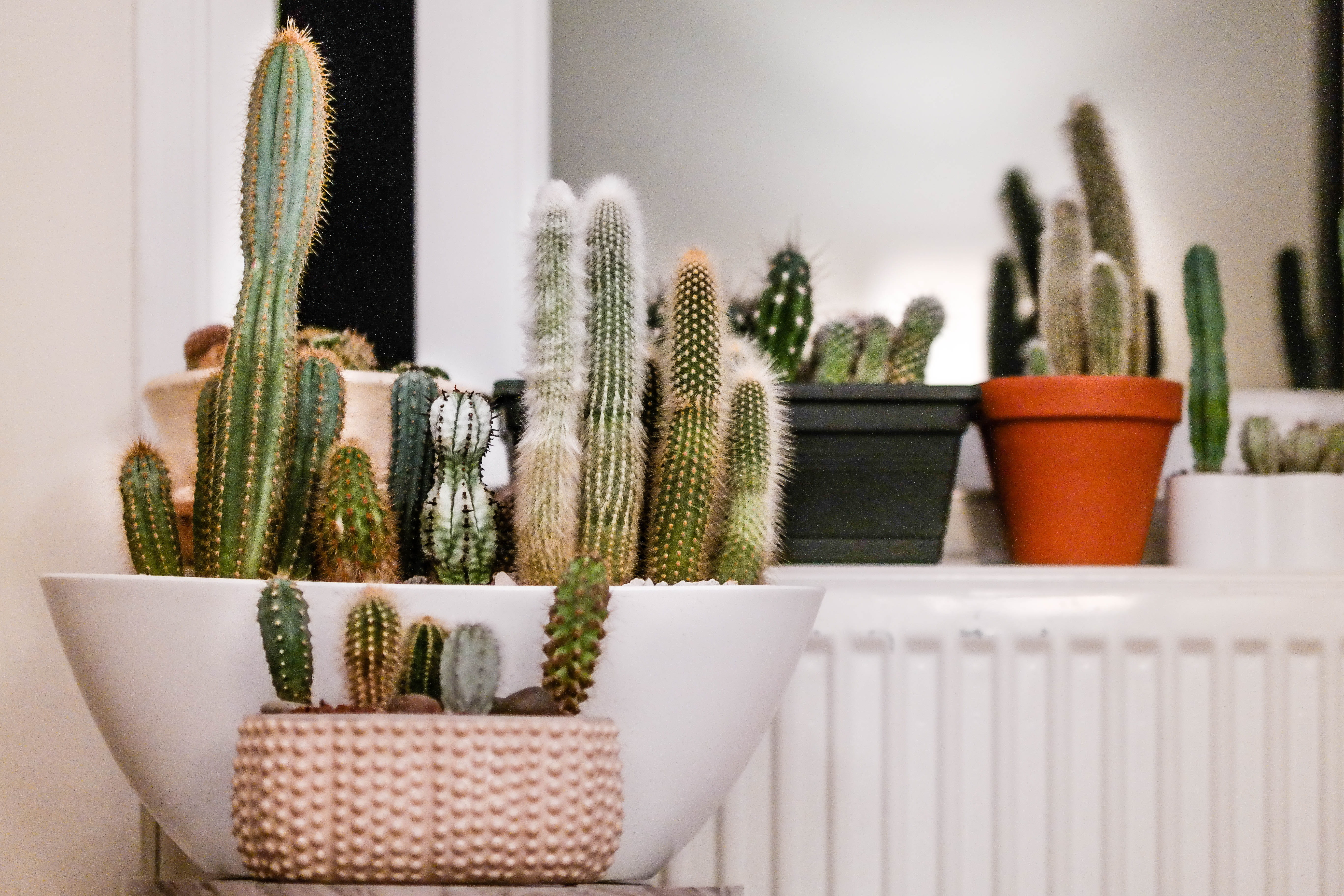 the summer daytime hours could actually overheat or burn them, sending them into an early dormancy. Try to keep them at or below 86 degrees F. To replicate their natural environments, most cacti prefer cooler night time temperatures — 55 – 66 degrees F.
the summer daytime hours could actually overheat or burn them, sending them into an early dormancy. Try to keep them at or below 86 degrees F. To replicate their natural environments, most cacti prefer cooler night time temperatures — 55 – 66 degrees F.
Fall and winter call for some changes in how cacti are cared for. Moving them closer to windows helps them abs orb more light during the shorter days. On the other hand, placing cacti too close to windows can expose them to cold drafts or freezing temperatures, both of which can cause permanent harm.
orb more light during the shorter days. On the other hand, placing cacti too close to windows can expose them to cold drafts or freezing temperatures, both of which can cause permanent harm.
Knowing when and how to water is also a critical factor in keeping indoor cacti healthy. An appropriate schedule of regular watering is essential during the growing season. Unfortunately, what is appropriate varies from variety to variety. There are a few general rules that apply to all species.
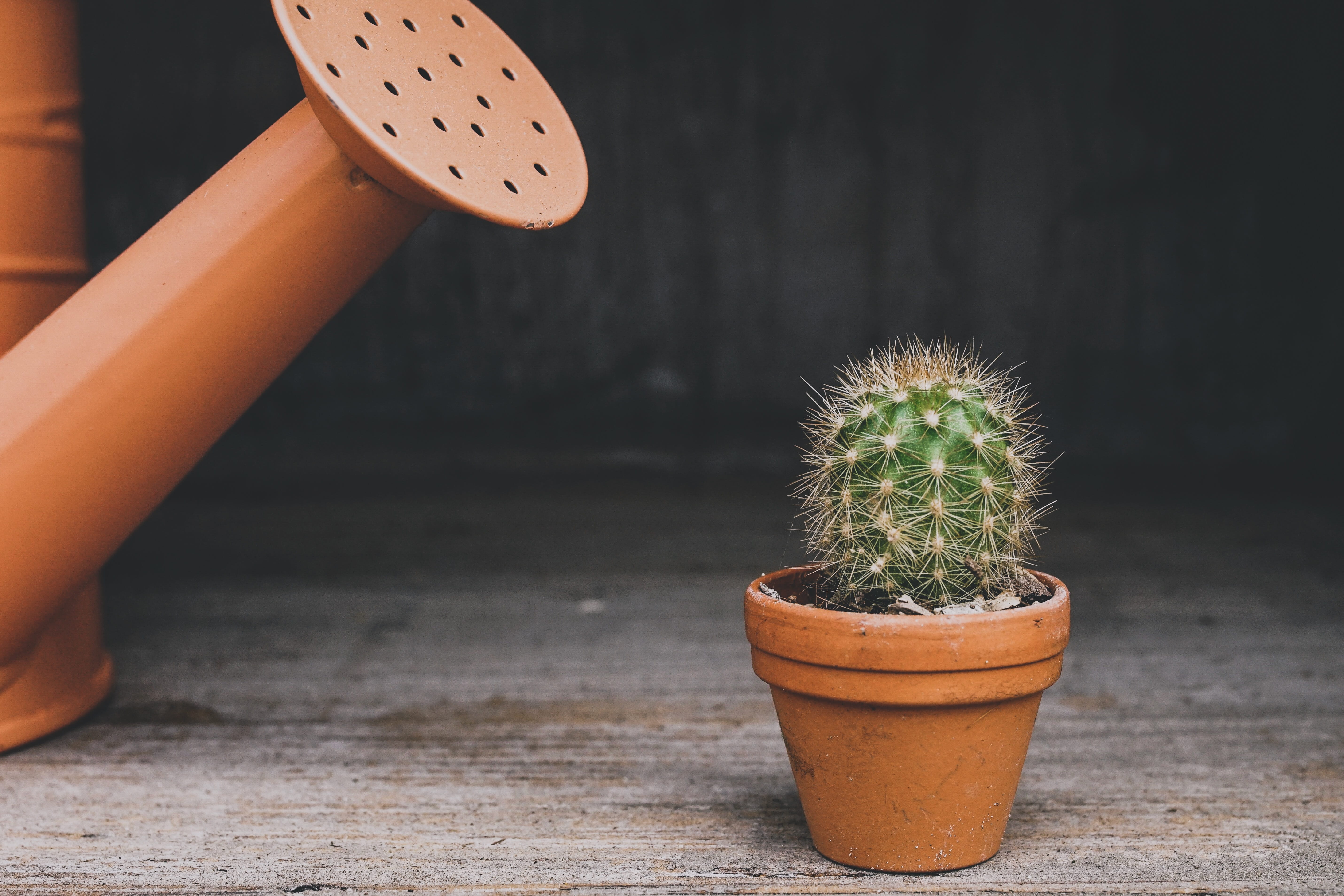
- Make sure pots have sufficient drainage holes.
- Do not overwater. Make sure that the soil has dried between waterings. Check the weight of the pot. Dry soil is lighter than wet soil.
- Pour out any standing water in saucers.
- Use a narrow spouted watering can to avoid pouring water on stems and leaves. For extremely tight plantings, use a syringe to water.
- Reduce waterings in the fall and winter. Some desert cacti do not need any winter waterings.

Another important element in growing cacti is the choice of potting medium. A heavy soil can be deadly to most varieties because it will tend to hold too much water next to the roots, allowing them to become waterlogged. An ideal mixture is a 50:50 mixture of loam-based soil and horticultural grit or sand. Commercial cactus soil is widely available, or you can easily mix your own.

Because growth rates are so slow, chances are it will be two to three or even four years before a cactus outgrows its original pot. When that time does come, having the right tools on hand makes the job much easier.

Most experts recommend:
- a small trowel or spoon
- bamboo skewer
- sharp scissors
- a small soft-bristled brush
- bubble wrap, newspaper or cactus gloves
- gravel for mulch
- high quality cactus soil
- new pot approximately two inches larger than original
- clay pots are well-suited to cactus because they tend to draw water from the soil, but plastic and ceramic work well also
- avoid metal planters because of their tendency to overheat the soil in strong light and high temperatures
- make sure to sterilize previously used container before planting
To repot, spoon some of the cactus soil into the new pot. Keep in mind that when potted, the bottom of the cactus should be slightly below the rim of the pot.

Remove the cactus from the old container by loosening the soil around the edges with the skewer. Then, either wearing gloves or using the bubble wrap as a sling, gently slide the cactus out of its original pot.

Look for evidence of mealy bugs. If found, then treat by spraying with either a mixture of water and isopropyl alcohol or a chemical treatment.

Check the roots. If root-bound, use the scissors to snip some of the bottom and side roots. This allows them to begin spreading and growing again.

Set the cactus in the new container, checking the planting depth.

Fill in soil around the cactus, this time using the skewer to firm the soil and remove any air pockets. A light tap on a hard surface can also help to settle loose soil.

Spread a layer of gravel around the base of the cactus to protect it from dirt spray during initial waterings. Using the soft brush, gently remove any soil on the plant itself.

Water well, but avoid drowning the plant.

If you’re really smitten with cacti and would like to know which ones to plant outdoors, join us next Tuesday for our “Must Have” series, where we will highlight a few varieties of cacti for zones 5 and 6.
